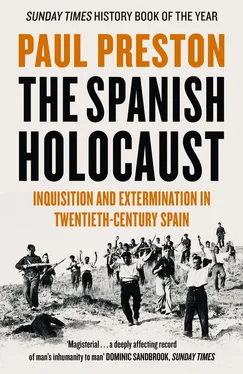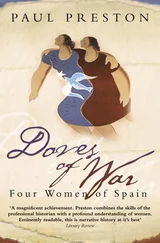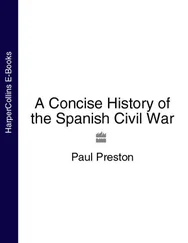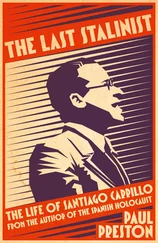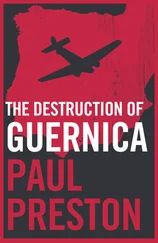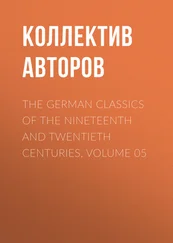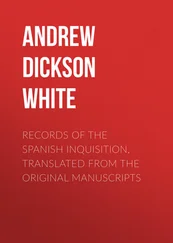When Gonzalo de Aguilera shot six labourers in Salamanca, he perceived himself to be taking retaliatory measures in advance. Many landowners did the same by joining or financing mixed columns like that of Carranza. They also played an active role in selecting victims to be executed in captured villages. In a report to Lisbon, in early August, the Portuguese Consul in Seville praised these columns. Like the Italian Consul, he had been given gory accounts of unspeakable outrages allegedly committed against women and children by armed leftist desperadoes. Accordingly, he reported with satisfaction that, ‘in punishing these monstrosities, a harsh summary military justice is applied. In these towns, not a single one of the Communist rebels is left alive, because they are all shot in the town square.’ 65In fact, these shootings reflected no justice, military or otherwise, but rather the determination of the landowners to put the clock back. Thus, when labourers were shot, they were made to dig their own graves first, and Falangist señoritos shouted at them, ‘Didn’t you ask for land? Now you’re going to have some, and for ever!’ 66
The atrocities carried out by the various columns were regarded with relish by Queipo de Llano. In a broadcast on 23 July, he declared, ‘We are determined to apply the law without flinching. Morón, Utrera, Puente Genil, Castro del Río, start digging graves. I authorize you to kill like a dog anyone who dares oppose you and I say that, if you act in this way, you will be free of all blame.’ In part of the speech that the censorship felt was too explicit to be printed, Queipo de Llano said, ‘Our brave Legionarios and Regulares have shown the red cowards what it means to be a man. And incidentally the wives of the reds too. These Communist and anarchist women, after all, have made themselves fair game by their doctrine of free love. And now they have at least made the acquaintance of real men, not wimpish militiamen. Kicking their legs about and squealing won’t save them.’ 67
Queipo de Llano’s speeches were larded with sexual references. On 26 July, he declared: ‘Sevillanos! I don’t have to urge you on because I know your bravery. I tell you to kill like a dog any queer or pervert who criticizes this glorious national movement.’ 68Arthur Koestler interviewed Queipo de Llano at the beginning of September 1936: ‘For some ten minutes he described in a steady flood of words, which now and then became extremely racy, how the Marxists slit open the stomachs of pregnant women and speared the foetuses; how they had tied two eight-year-old girls on to their father’s knees, violated them, poured petrol on them and set them on fire. This went on and on, unceasingly, one story following another – a perfect clinical demonstration in sexual psychopathology.’ Koestler commented on the broadcasts: ‘General Queipo de Llano describes scenes of rape with a coarse relish that is an indirect incitement to a repetition of such scenes.’ 69Queipo’s comments can be contrasted with an incident in Castilleja del Campo when a truckload of prisoners was brought for execution from the mining town of Aznalcóllar, which had been occupied on 17 August by Carranza’s column. Among them were two women tied together, a mother and her daughter who was in the final stages of pregnancy and gave birth as she was shot. The executioners killed the baby with their rifle butts. 70
The most important of the columns carrying out Queipo’s bidding was commanded by the stocky Major Antonio Castejón Espinosa. After taking part in the repression of Triana and La Macarena in Seville itself, and prior to setting out on the march to Madrid, Castejón made a number of rapid daily sorties to both the east and west of the city. In its war on the landless peasantry, Castejón’s column drew on the training and experience of the Legion and the Civil Guard and had the added advantage of the artillery directed by Alarcón de la Lastra. Fulfilling Queipo’s threats, to the east the column conquered Alcalá de Guadaira, Arahal, La Puebla de Cazalla, Morón de la Frontera, reaching Écija before moving south to Osuna, Estepa and La Roda, advancing as far as Puente Genil in Córdoba, seventy-five miles from Seville. To the west, at Valencina del Alcor, just outside Seville, Castejón’s forces liberated the estate of a rich retired bullfighter, Emilio Torres Reina, known as ‘Bombita’. ‘Bombita’ himself enthusiastically joined in the fighting and the subsequent ‘punishment’ of the prisoners. Castejón went as far as La Palma del Condado in Huelva, thirty-four miles from Seville. First the town was bombed, which provoked the murder of fifteen right-wing prisoners by enraged anarchists. On 26 July, La Palma was captured in a pincer action by the columns of both Castejón and Carranza, who bitterly disputed the credit of being first. 71
When forces of the Legion sent by Queipo de Llano finally took Huelva itself on 29 July, they discovered that the Mayor and many of the Republican authorities had managed to flee on a steamer to Casablanca. The city fell after brief resistance in the Socialist headquarters (the Casa del Pueblo). Seventeen citizens were killed in the fighting and nearly four hundred prisoners were taken. Executions began immediately. Corpses were regularly found in the gutters. Still basking in the glory of the massacre of the miners at La Pañoleta, Major Haro Lumbreras was named both Civil and Military Governor of Huelva. Those Republican civil and military authorities who had not managed to escape – the Civil Governor and the commanders of the Civil Guard and the Carabineros – were put on trial on 2 August, charged with military rebellion. Haro testified against his immediate superior, Lieutenant Colonel Orts Flor, who had organized the miners’ column sent to Seville.
To inflate his own heroism, and inadvertently revealing his own obsessions, Haro claimed that the orders from General Pozas passed on by Orts which had instigated the expedition were to ‘blow up Seville and fuck the wives of the fascists’. Unsurprisingly, the accused were found guilty and sentenced to death. Numerous conservatives and clerics whose lives had been saved by the Civil Governor, Diego Jiménez Castellano, sent telegrams to Seville on 4 August desperately pleading for clemency. Queipo de Llano replied: ‘I regret that I cannot respond to your petition for pardon for the criminals condemned to death, because the critical situation through which Spain is passing means that justice cannot be obstructed, for the guilty must be punished and an example made of them.’ Diego Jiménez Castellano, Julio Orts Flor and Alfonso López Vicencio were shot shortly after 6.00 p.m. on 4 August. 72
With Huelva itself in rebel hands, the process began, as it had in Cádiz and Seville, of columns being sent out to mop up the remainder of the province. Carranza’s column was involved in the taking of nearby towns to the south like Lepe, Isla Cristina and Ayamonte. Many of the Republicans who were arrested and taken to Huelva for trial were murdered along the way. 73In the north, the rebels already had a bridgehead in the town of Encinasola, where the rising had triumphed immediately. The right could count on support from Barrancos across the Portuguese frontier. 74With considerable bloodshed, a major role in the capture of towns and villages to the east and north of the capital was played by Luis Redondo’s column of Carlists from Seville. The mining towns of the north were centres of obdurate resistance, holding out for some weeks despite artillery bombardment. Higuera de la Sierra fell on 15 August. Zalamea la Real on the edge of the Riotinto mining district fell the next day. The capture of these villages was followed by indiscriminate shootings. 75
The savagery increased as the columns entered Riotinto. The inhabitants had fled from the village of El Campillo. Finding it deserted, Redondo gave the order to burn it to the ground. Queipo de Llano broadcast the absurd lie that the local anarchists had burned twenty-two rightists alive and then set fire to their own homes. An air raid on Nerva on 20 August killed seven women, four men, a ten-year-old boy and six-month-old girl. One right-winger had been killed before the arrival of Redondo. The Communist Mayor ensured that twenty-five others who were in protective custody were unharmed, despite the popular outrage after the bombing raid. When the village was taken, Redondo’s men executed 288 people. In Aroche, ten right-wingers were killed and, when Redondo’s column arrived on 28 August, despite the fact that many leftists had fled north towards Badajoz, his men executed 133 men and ten women. The town’s female population was subjected to humiliation and sexual extortion. Reports of this terror ensured that resistance elsewhere would be dogged. The siege of El Cerro de Andévalo lasted over three weeks and required the contribution of three columns of Civil Guards, Falangists and Requetés. There the local CNT committee or Junta had protected the nuns in a local convent but were unable to prevent attacks on church property. The repression when the town fell on 22 September was ferocious. In nearby Silos de Calañas, women and children were shot along with the men. Large numbers of refugees now headed north towards the small area in Badajoz still not conquered by the rebels. 76
Читать дальше
